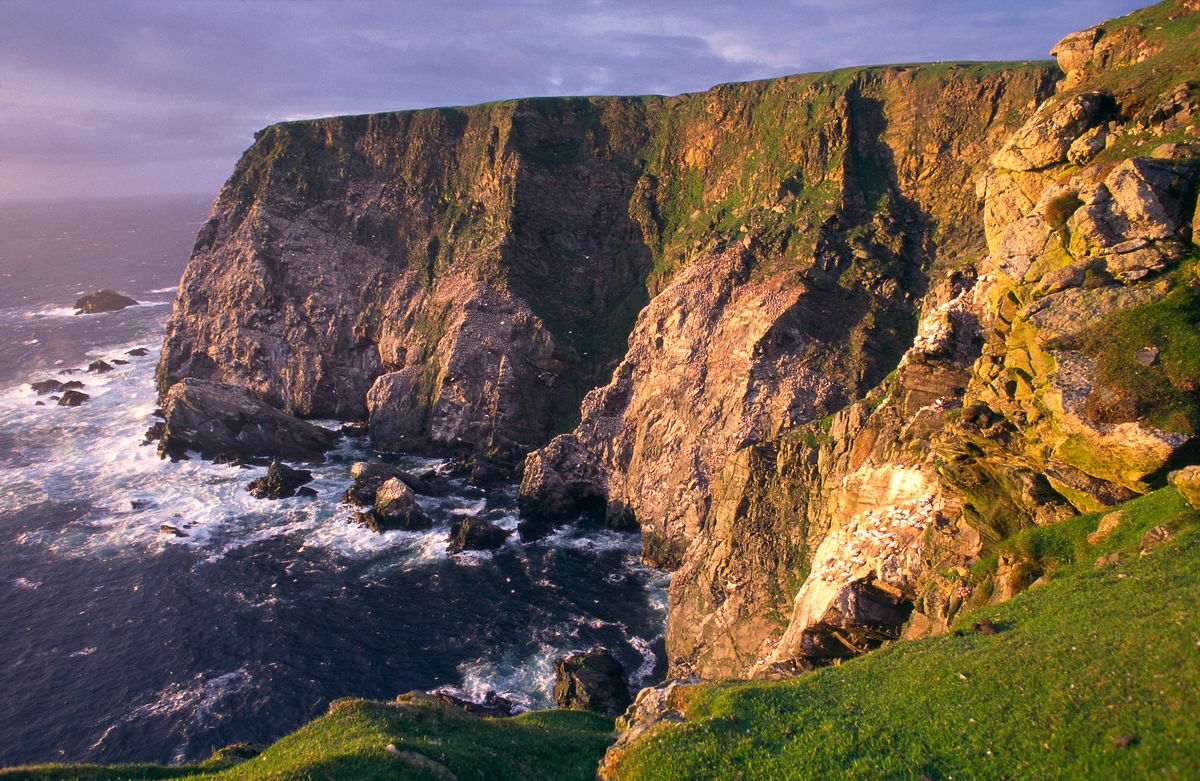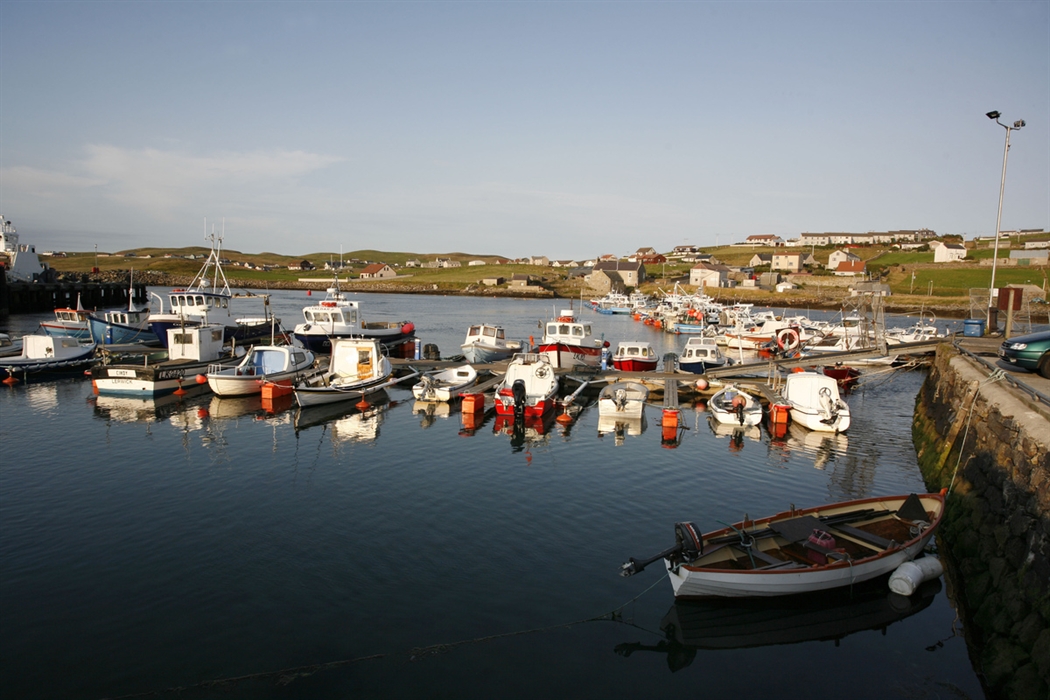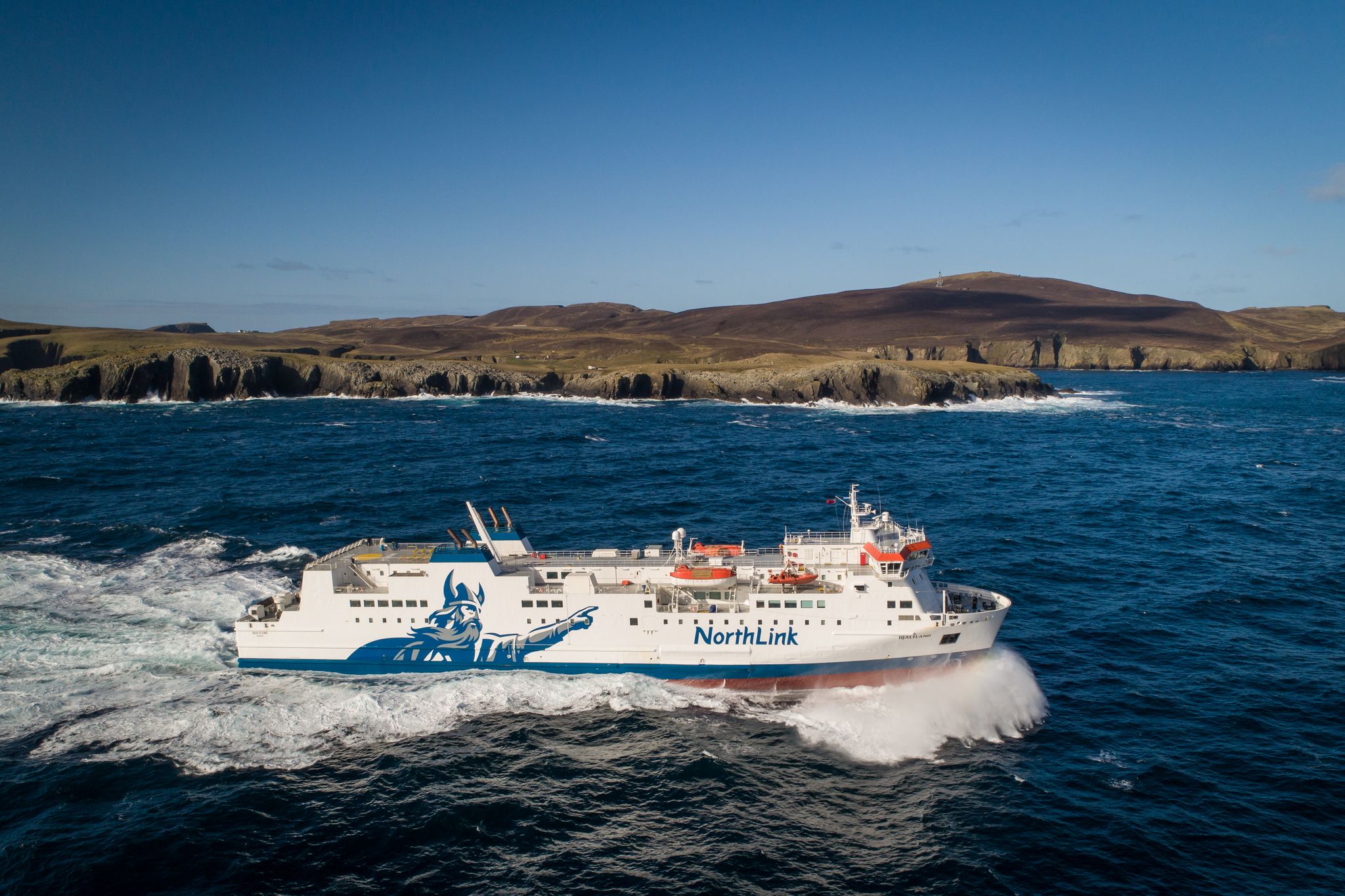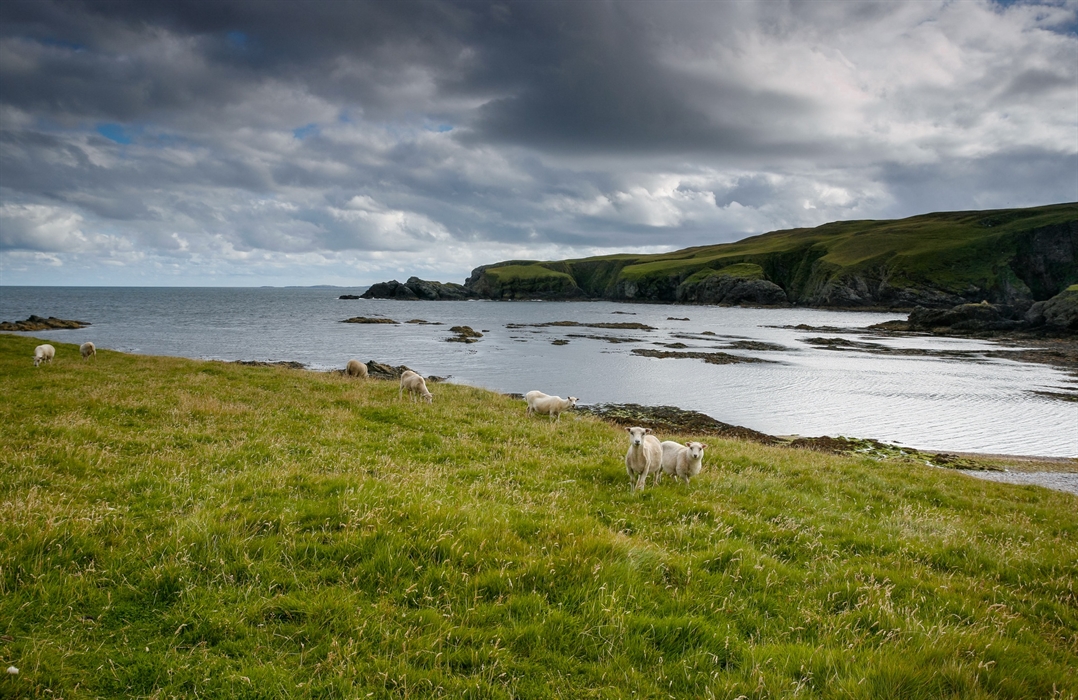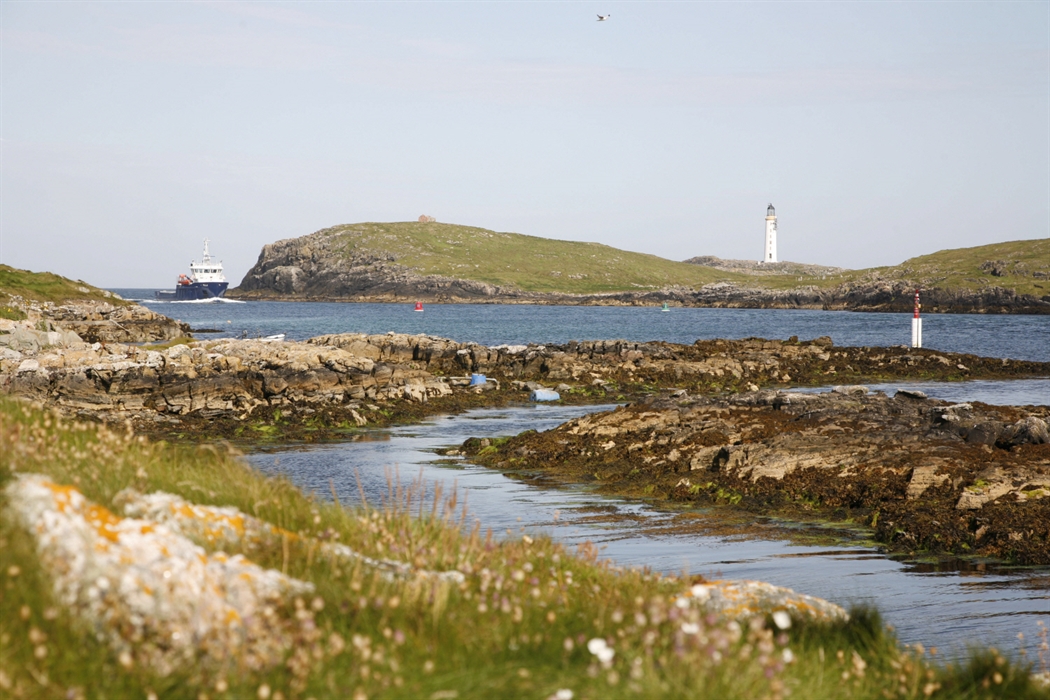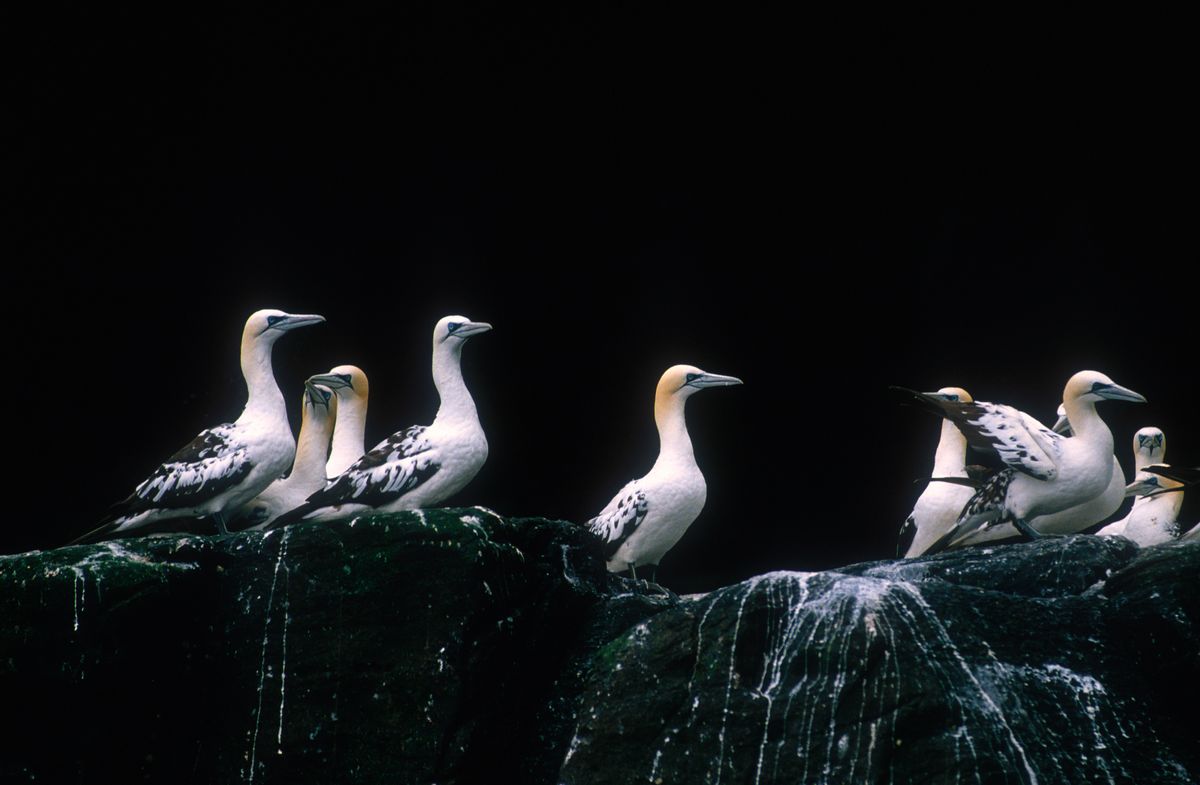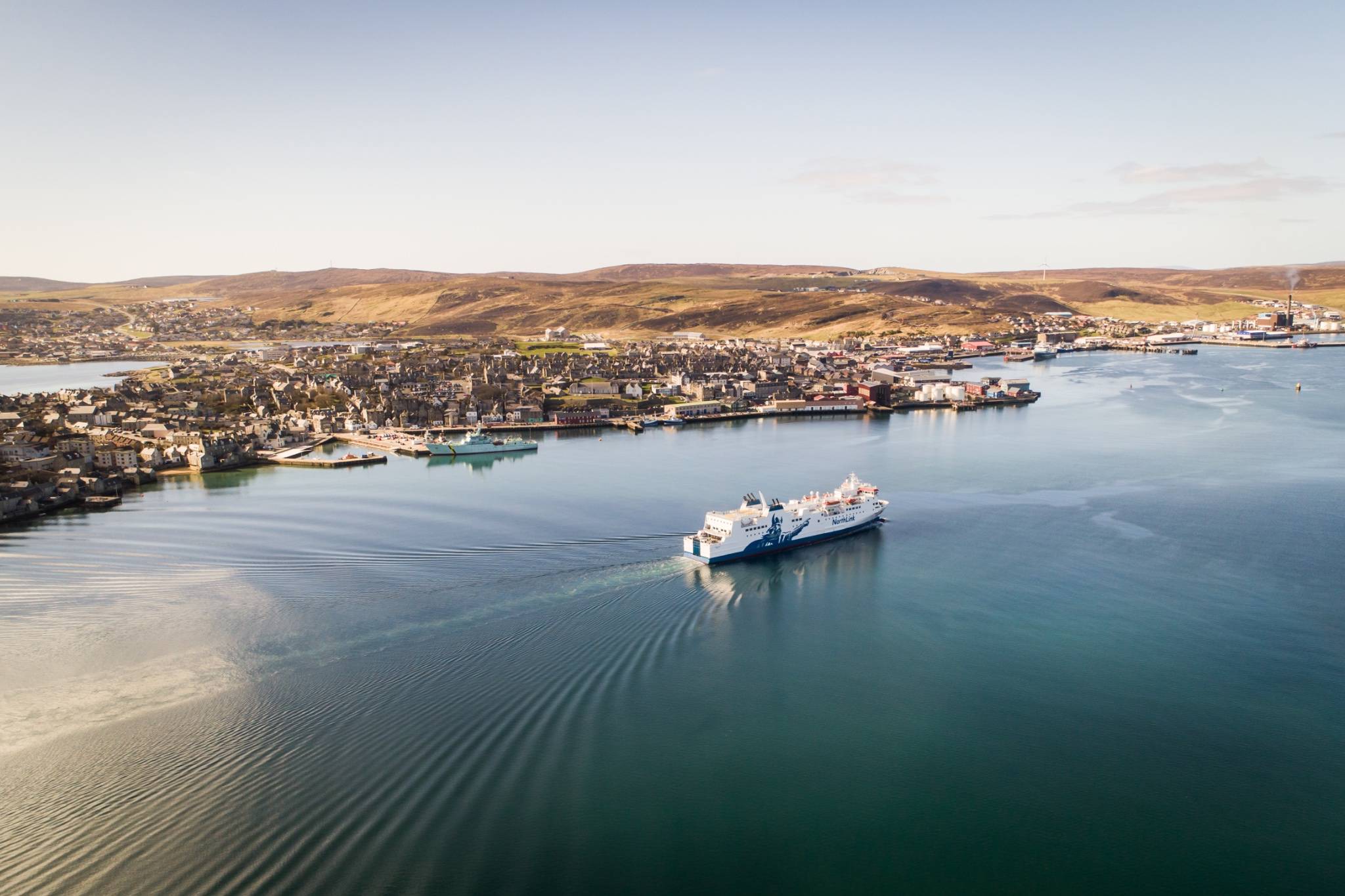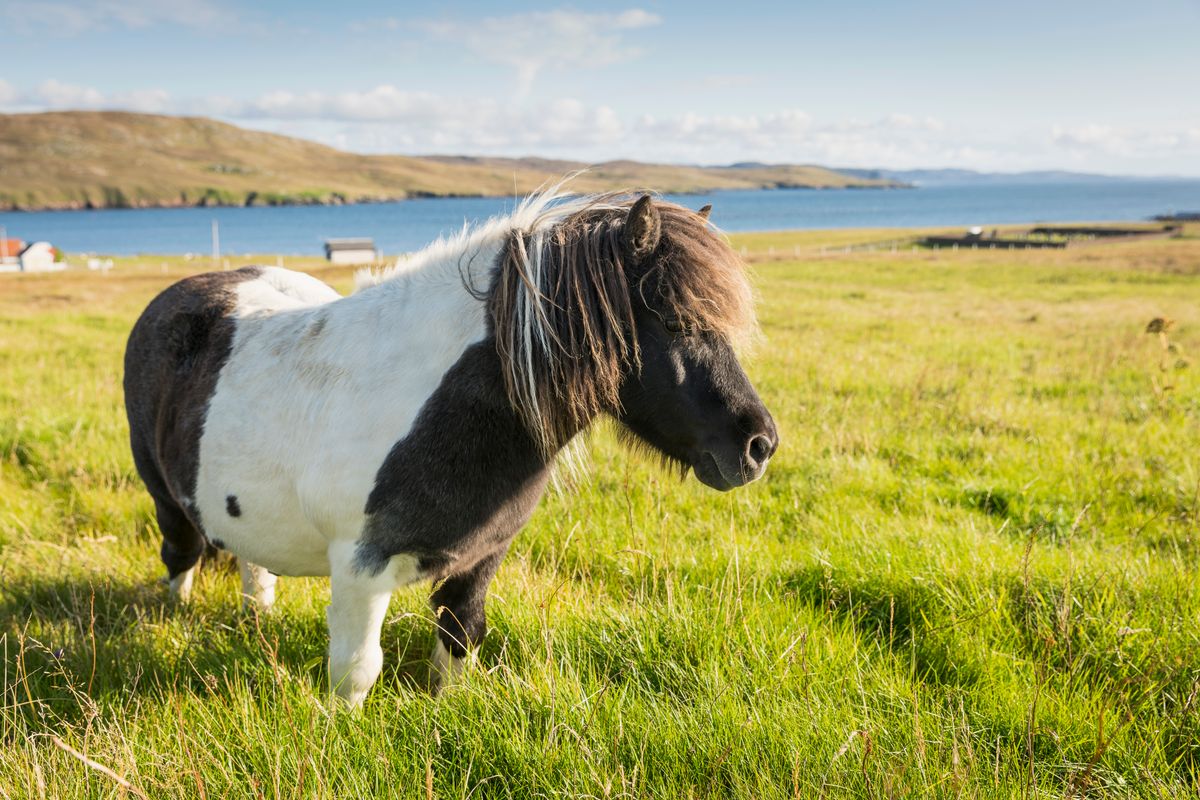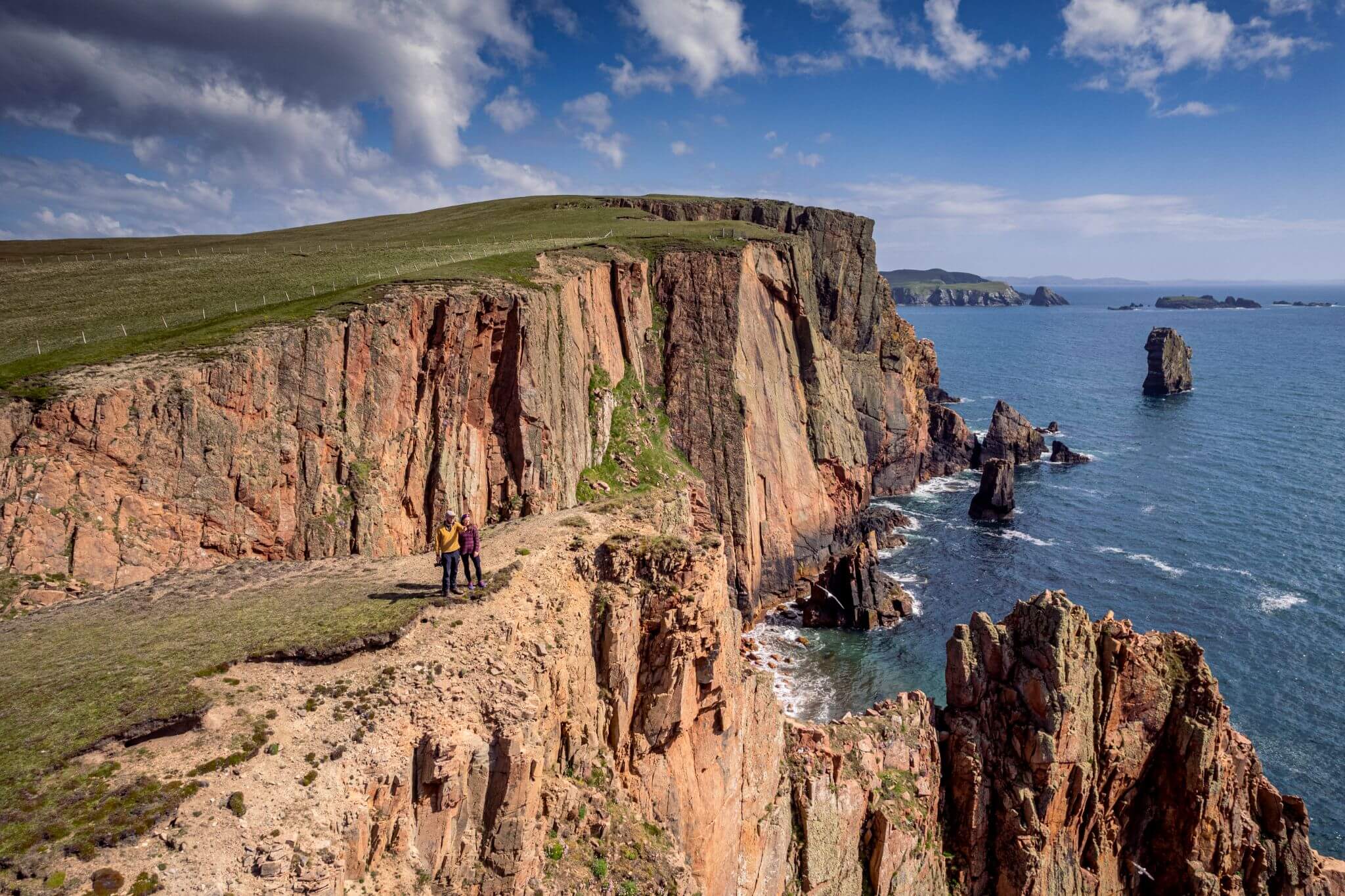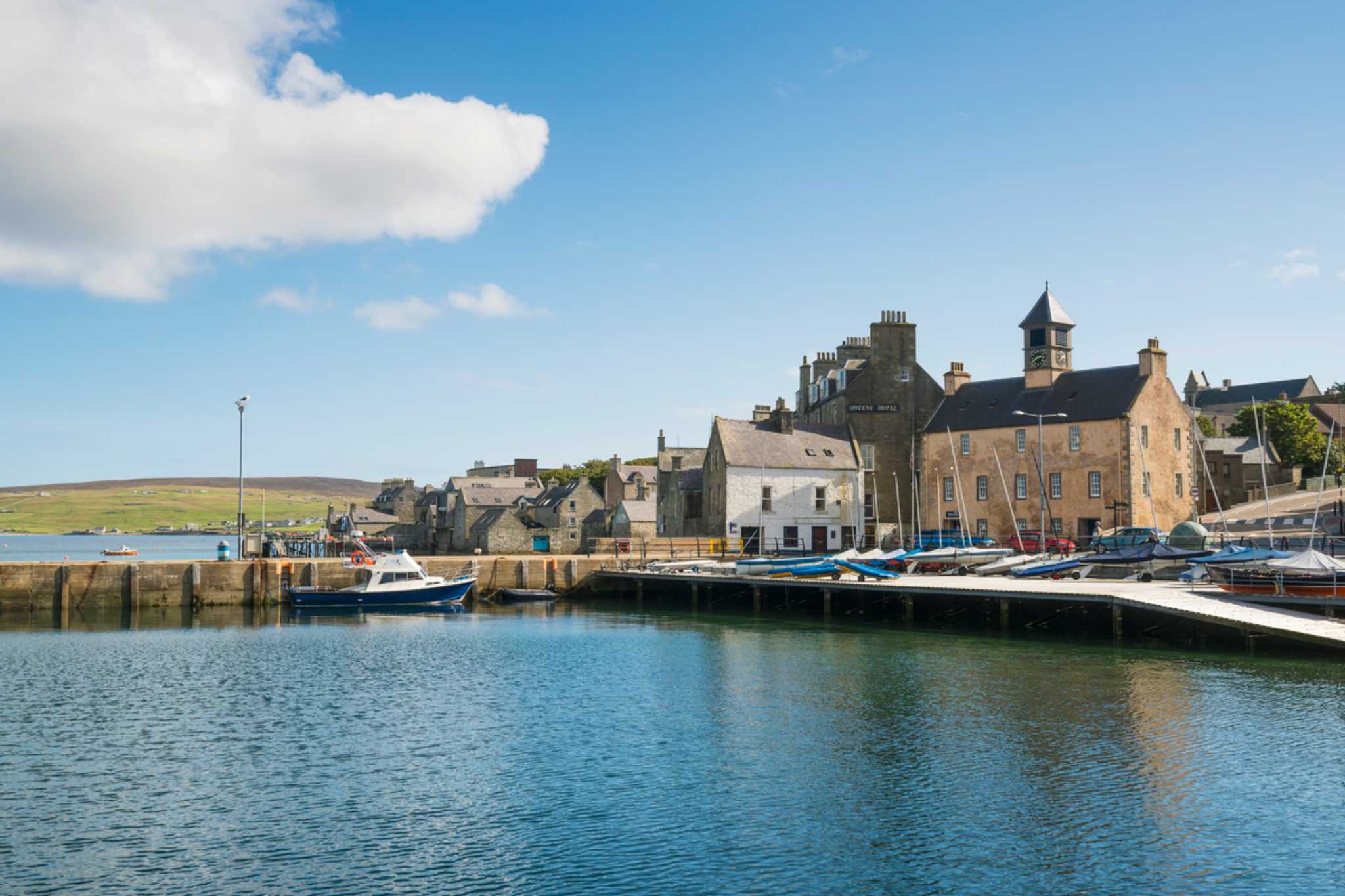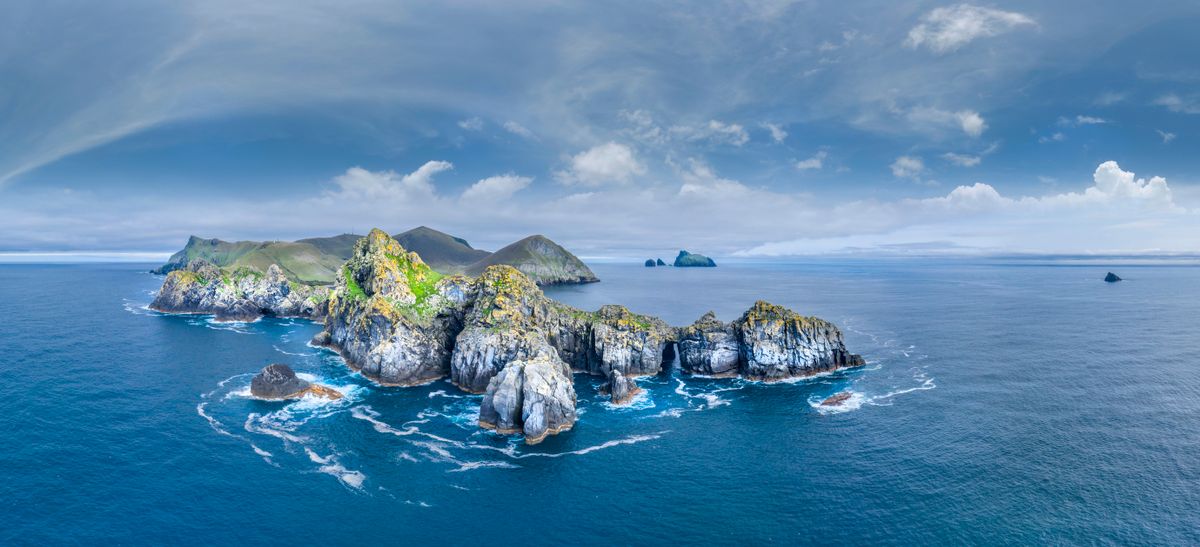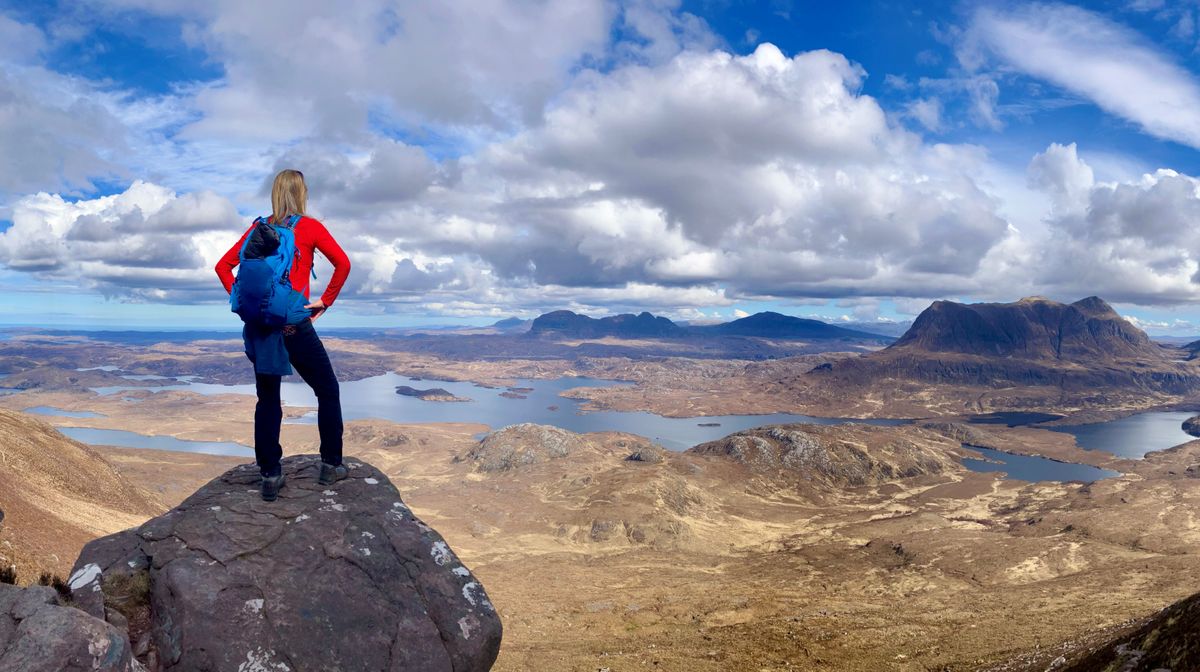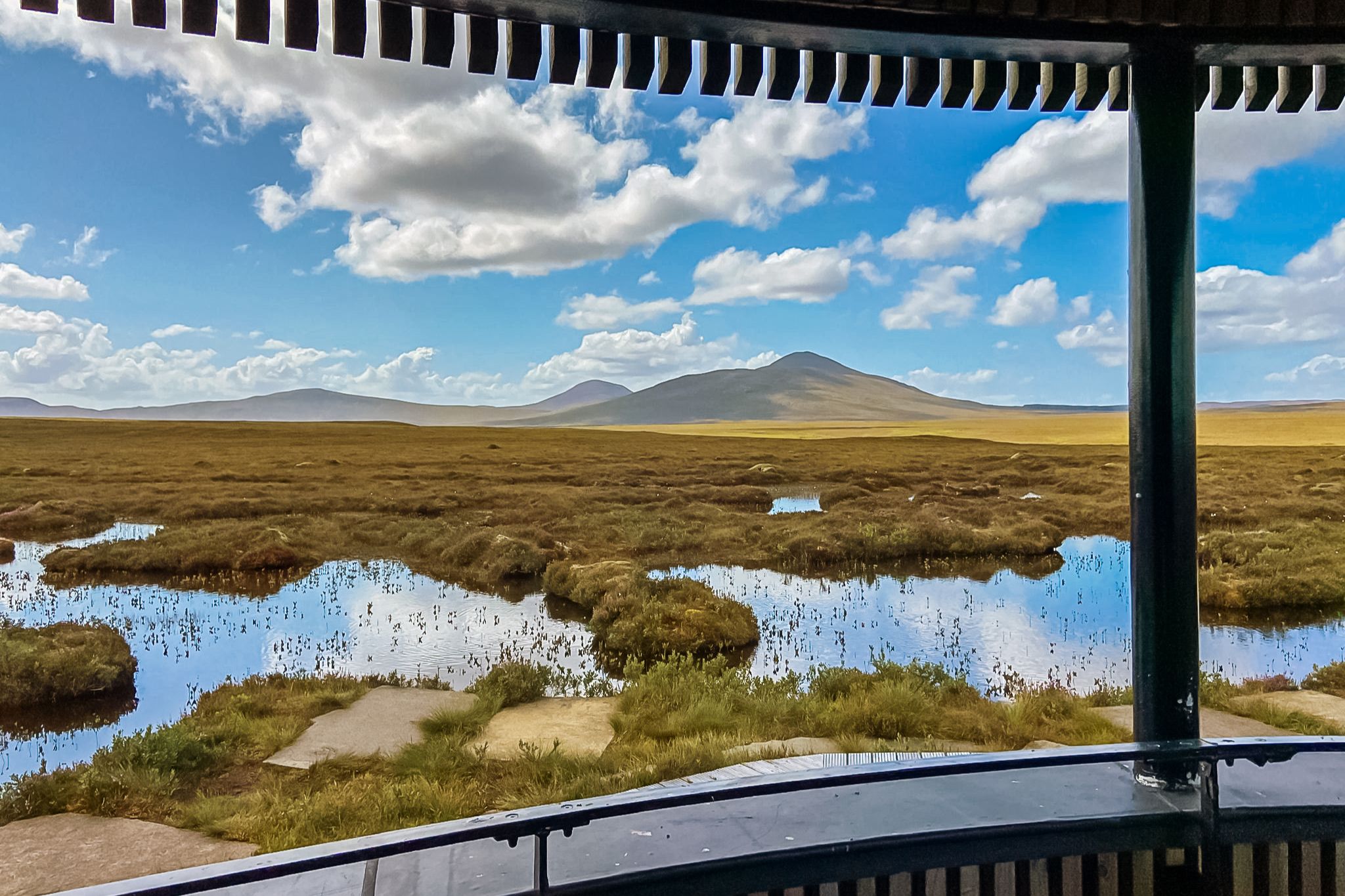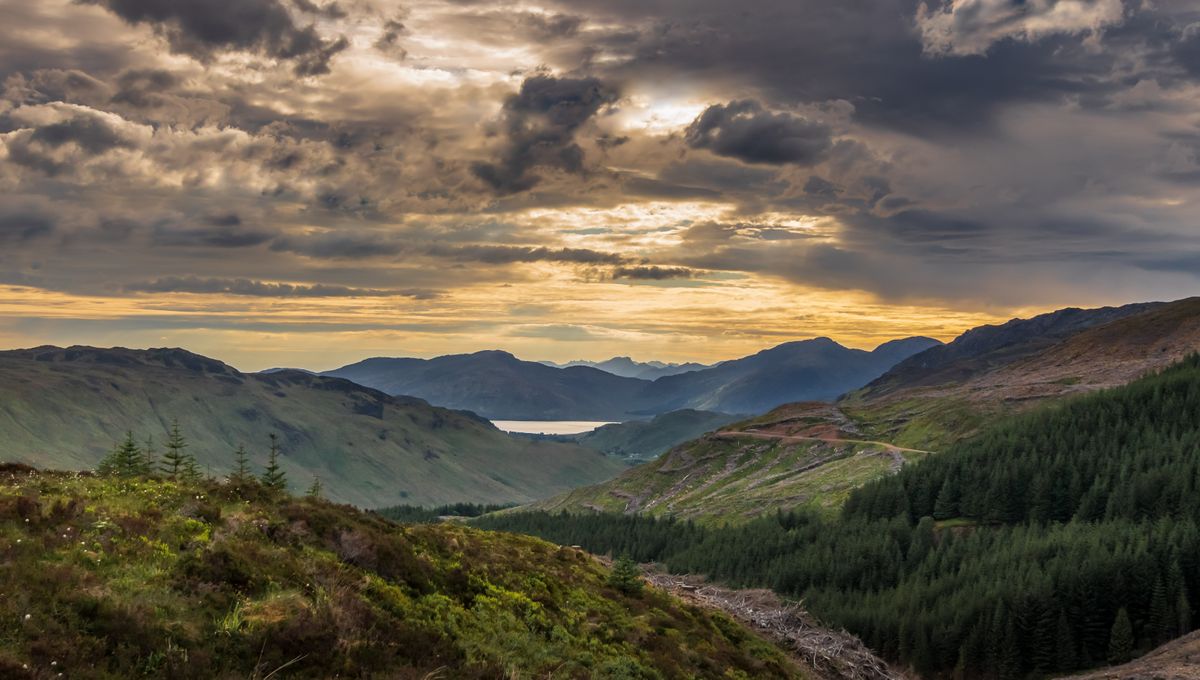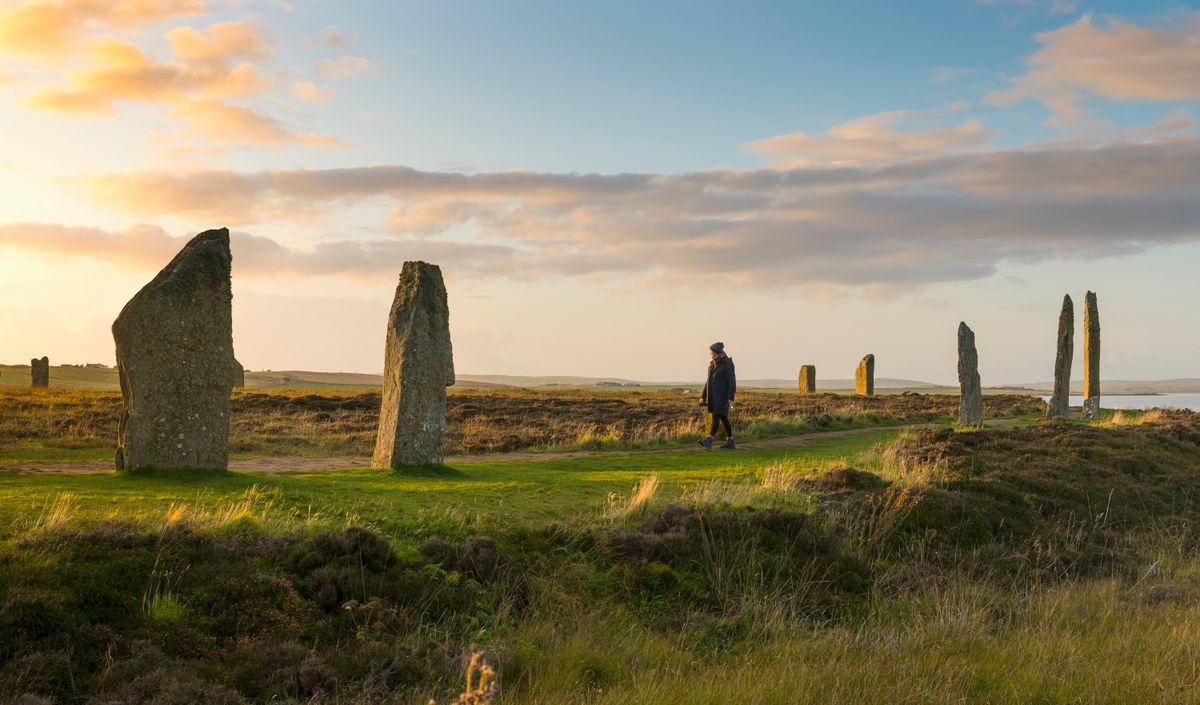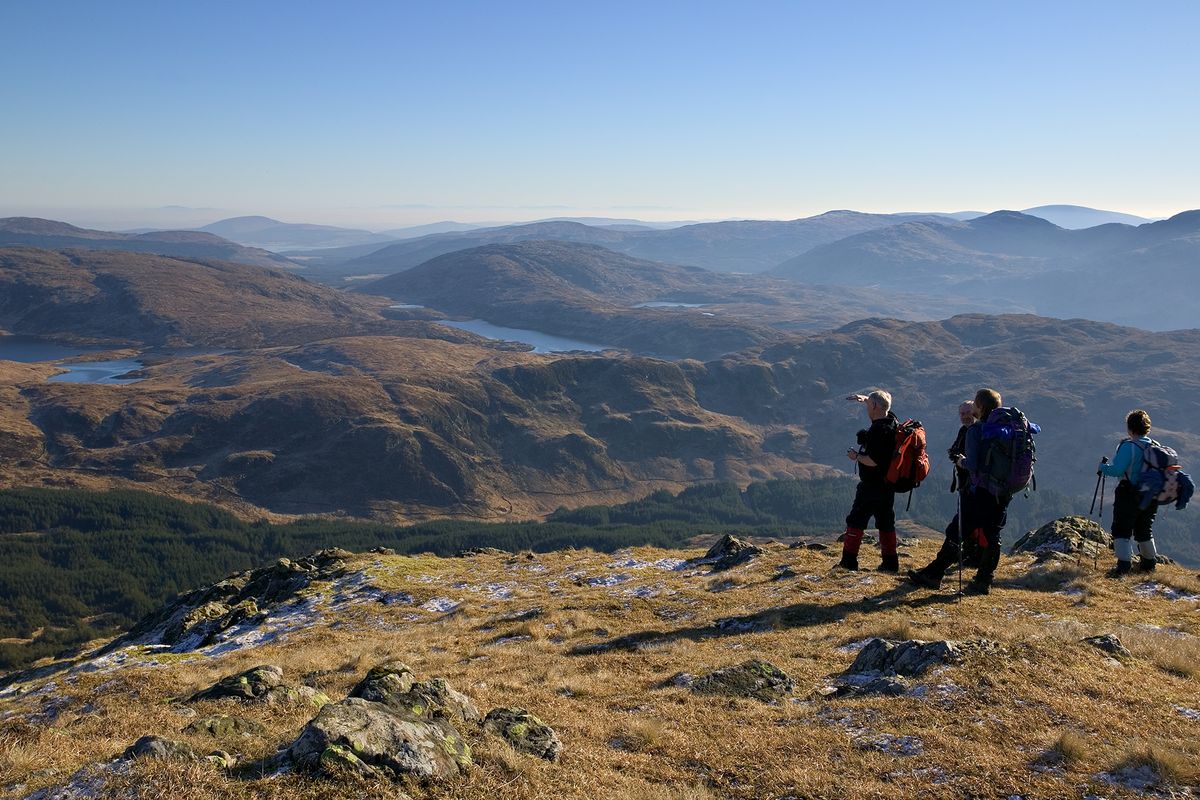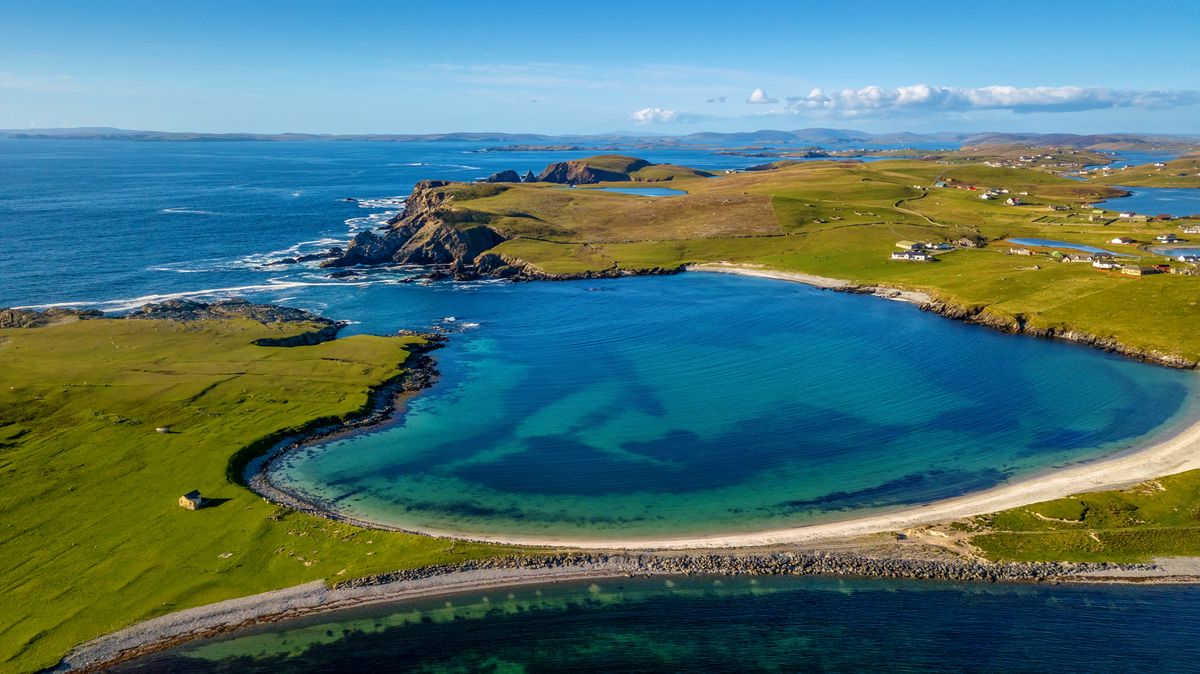
Bannaminn Beach
Shetland Geopark showcases a wide range of geological formations, spanning over 3 billion years of Earth's history. You can discover and learn more about rocks from different geological periods, such as ancient Lewisian gneisses, Devonian sandstones, and ophiolites. The geopark also features dramatic coastal cliffs, sandy beaches, and rolling hills, creating ideal habitats for a variety of wildlife and bird species as well as stunning scenery to admire.
Delve into the rich human history, with evidence of Neolithic, Viking, and more recent settlements. Visit sites like the ancient settlement of Jarlshof and various broch towers, highlighting the range of people that have lived on the islands throughout time.
The Skidbladner
© Promote Shetland / Euan Myles
Shetland by area
This archipelago is ancient and historic, with many areas and corners of the islands unique in their own way.
Lerwick – the main town and port of the Shetland Isles.
Unst – Britain’s most northerly inhabited island.
Yell – the largest of the Northern Isles.
Whalsay – features a strong fishing heritage and is half-an-hour by ferry from the east coast of Mainland Shetland.
Fair Isle – lies midway between Orkney and Shetland.
Sands of Breckon on the Island of Yell
Foula – one of the most remote inhabited islands in the British Isles.
Fetlar – lies south of Unst and east of Yell and is the fourth largest island in Shetland and is known as the ‘Garden of Shetland’.
Bressay and Noss - Bressay lies east of Lerwick and is just a short ferry trip, while Noss is off the east coast of Bressay and is a paradise for nesting birds.
Papa Stour - a small, rugged island off the west coast of Mainland Shetland and is popular with walkers and wildlife enthusiasts.
The Out Skerries – three tiny islands 4 miles off Whalsay and are Shetland’s most easterly outpost.
